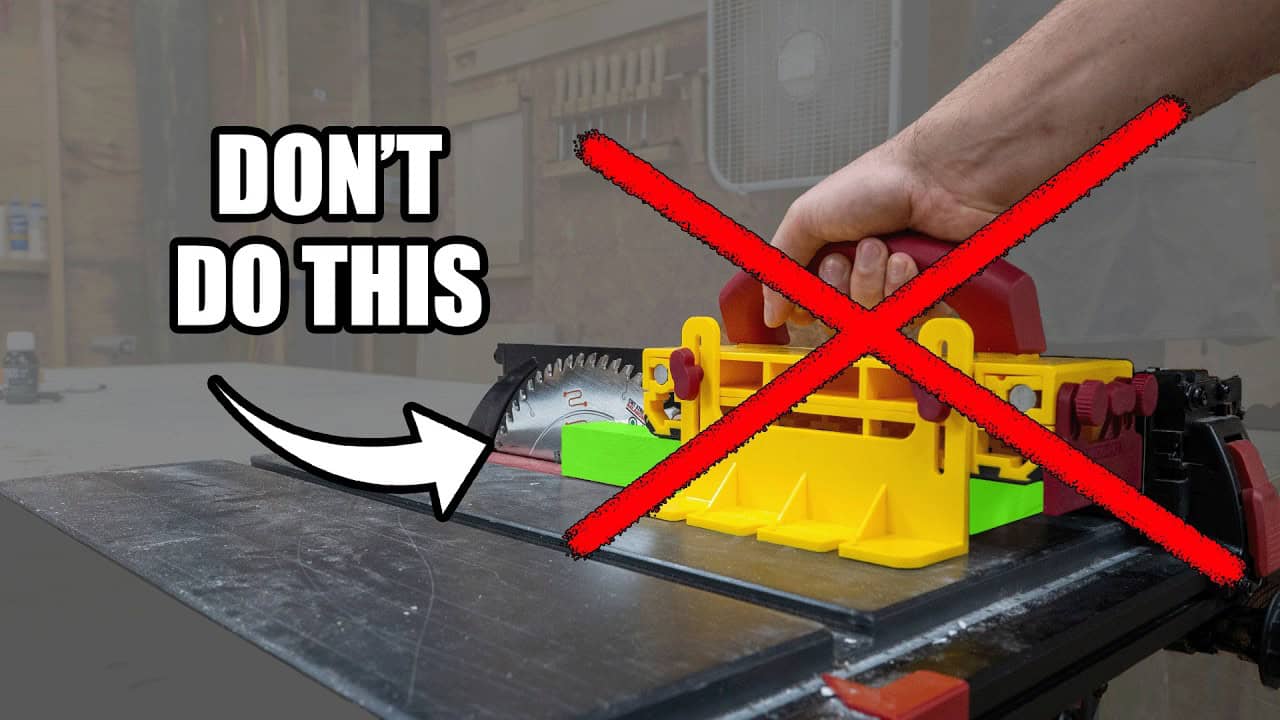This video is by Marcus from Salty Woodworking.
He walks through five essential safety tools every shop should have—plus a bonus tip that boosts both safety and productivity.
Each tool was chosen not just for protection, but also for comfort and usability. If it isn’t comfortable, it won’t get used—and that’s when accidents happen.
Watch the full video and subscribe to Marcus’s channel:
Safety Starts with Dust Protection
Dust is a constant in any woodworking shop, and long-term exposure can lead to serious respiratory issues. Even if you have a dust collector or air filter, fine particles remain in the air—especially during sanding or routing.
Marcus recommends using a reusable mask with replaceable filters. These offer better fit, comfort, and longevity than disposable masks.
Key features to look for:
- A flexible nose seal to prevent gaps
- Soft materials that don’t chafe during long sessions
- Low breathing resistance so you’re not tempted to take it off mid-project
It’s a small habit with big payoffs. A mask that’s easy to wear becomes part of the daily routine, not an afterthought.
Push Sticks and Blocks: Hands Off the Blade
Table saw safety starts with one principle—never put your hands near the blade. That’s where a good push stick or block comes in.
Marcus emphasizes avoiding cheap, thin push sticks that come with the saw. Instead, opt for something heavier-duty or make one yourself from hardwood or durable plastic.
Push blocks with rubber grip, angled handles, or anti-slip bottoms allow more control over the workpiece. This also helps keep your cuts consistent and improves your technique.
Whether store-bought or shop-made, a push stick becomes one of the most used safety tools when ripping boards. It builds confidence at the saw and reinforces smart habits.
Eye Protection That Gets Worn
A single splinter or bit of debris can do permanent damage to your eyes. Still, uncomfortable safety glasses often get pushed up onto the forehead—or worse, forgotten entirely.
Marcus recommends choosing safety glasses that are lightweight, offer wraparound coverage, and won’t interfere with hearing protection.
Consider models with:
- Scratch-resistant lenses
- Frames that fit comfortably with earmuffs
- Styles that don’t pinch or slide down during long sessions
When safety gear fits right, it stays on. And when it stays on, it works.
Hearing Protection for Long Sessions
Woodworking noise builds up—routers, planers, saws, and even vacuums can exceed safe limits. Protecting your hearing is non-negotiable, and there are more comfortable options than ever before.
Marcus outlines two categories:
- Over-ear muffs: Ideal for blocking noise and can include Bluetooth for listening to music or podcasts.
- In-ear plugs: Compact, sometimes Bluetooth-enabled, and convenient—but can be less secure during high-motion tasks.
Regardless of style, comfort matters. If the ear protection causes pressure headaches or doesn’t fit your routine, it won’t get worn. Choose something that works with how you like to work.
Featherboards: Safer Cuts with Cleaner Results
Featherboards are a shop upgrade that increase both safety and precision. They apply side or downward pressure to keep your workpiece tight against the fence or table.
On a table saw or router table, this added control:
- Reduces the risk of kickback
- Keeps cuts straighter
- Allows hands to stay farther from the blade
Some featherboards are modular or stackable, allowing multiple pressure points for taller or thinner stock. If you haven’t used one before, it’s a great investment in both safety and smoother results.
Bonus: Thin-Rip Jig and Zero-Clearance Insert
Marcus’s bonus pick is the thin-rip jig—a tool that makes repeated thin cuts safer and easier. Instead of trying to push narrow strips between the blade and fence, the jig rides in the miter slot, and the fence acts as the stop.
This setup:
- Keeps your hands clear of the blade
- Ensures consistency across repeated cuts
- Works on any saw with a miter slot
Paired with a zero-clearance insert, which prevents thin offcuts from falling into the throat plate, the jig transforms a risky task into a safe, repeatable one.
Final Takeaway: Safety Gear You’ll Actually Use
Every item on Marcus’s list shares a theme—usability. The safest gear is the gear you reach for every time because it fits well and does its job without getting in the way.
Here’s a quick recap of the tools Marcus recommends:
- A reusable dust mask with replaceable filters
- Sturdy push sticks or blocks for saw work
- Comfortable safety glasses that don’t get removed
- Hearing protection that fits your workflow
- Featherboards to control stock and prevent kickback
- A thin-rip jig and zero-clearance insert for safer narrow ripping
Watch the full video and subscribe to Marcus’s channel:
